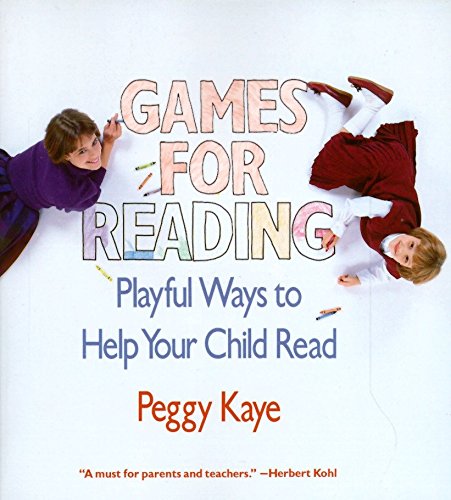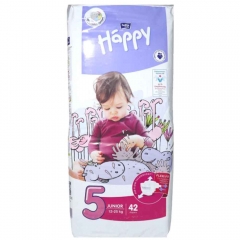-
 Thanh toán đa dạng, linh hoạtChuyển khoản ngân hàng, thanh toán tại nhà...
Thanh toán đa dạng, linh hoạtChuyển khoản ngân hàng, thanh toán tại nhà... -
 Miễn Phí vận chuyển 53 tỉnh thànhMiễn phí vận chuyển đối với đơn hàng trên 1 triệu
Miễn Phí vận chuyển 53 tỉnh thànhMiễn phí vận chuyển đối với đơn hàng trên 1 triệu -
 Yên Tâm mua sắmHoàn tiền trong vòng 7 ngày...
Yên Tâm mua sắmHoàn tiền trong vòng 7 ngày...

- Publisher:Pantheon; 1st edition (June 12, 1984)
- Language:English
- Paperback:240 pages
- ISBN-10:0394721497
- ISBN-13:978-0394721491
- Item Weight:1.1 pounds
- Dimensions:8.21 x 0.52 x 7.46 inches
- Best Sellers Rank:#624,527 in Books (See Top 100 in Books) #499 in Family Activity #1,651 in Reading & Phonics Teaching Materials #53,018 in Reference (Books)
- Customer Reviews:4.5 out of 5 stars 66Reviews

Mô tả sản phẩm
Product Description
HERE ARE OVER SEVENTY GAMES TO HELP YOUR CHILD LEARN TO READ--AND LOVE IT.
Peggy Kaye's Games for Reading helps children read by doing just what kids like best: playing games. There is a "bingo" game that helps children learn vocabulary. There is a rhyming game that helps them hear letter sounds more accurately. There are mazes and puzzles, games that train the eye to see patterns of letters, games that train the ear so a child can sound out words, games that awaken a child's imagination and creativity, and games that provide the right spark to fire a child's enthusiasm for reading. There are games in which your child has to act silly and games--sure to be any child's favorite--in which you do.
Easy to follow and easy to play, these games are ideal for busy, working parents. You can read a game in a few minutes and start to play right away. You can play on car trips, while doing the laundry, or while cooking. These games are so much fun for the whole family that you may forget their serious purpose. But they will help all beginning readers--those who have reading problems and those who do not--learn to read and want to read.
Games for Reading also includes a list of easy-to-read books and books for reading aloud, and a "Note to Teachers" on how to play these games in their classrooms.
From the Inside Flap
HERE ARE OVER SEVENTY GAMES TO HELP YOUR CHILD LEARN TO READ--AND LOVE IT.
Peggy Kaye's Games for Reading helps children read by doing just what kids like best: playing games. There is a "bingo" game that helps children learn vocabulary. There is a rhyming game that helps them hear letter sounds more accurately. There are mazes and puzzles, games that train the eye to see patterns of letters, games that train the ear so a child can sound out words, games that awaken a child's imagination and creativity, and games that provide the right spark to fire a child's enthusiasm for reading. There are games in which your child has to act silly and games--sure to be any child's favorite--in which you do.
Easy to follow and easy to play, these games are ideal for busy, working parents. You can read a game in a few minutes and start to play right away. You can play on car trips, while doing the laundry, or while cooking. These games are so much fun for the whole family that you may forget their serious purpose. But they will help all beginning readers--those who have reading problems and those who do not--learn to read and want to read.
Games for Reading also includes a list of easy-to-read books and books for reading aloud, and a "Note to Teachers" on how to play these games in their classrooms.
From the Back Cover
HERE ARE OVER SEVENTY GAMES TO HELP YOUR CHILD LEARN TO READ--AND LOVE IT.
Peggy Kaye's "Games for Reading helps children read by doing just what kids like best: playing games. There is a "bingo" game that helps children learn vocabulary. There is a rhyming game that helps them hear letter sounds more accurately. There are mazes and puzzles, games that train the eye to see patterns of letters, games that train the ear so a child can sound out words, games that awaken a child's imagination and creativity, and games that provide the right spark to fire a child's enthusiasm for reading. There are games in which your child has to act silly and games--sure to be any child's favorite--in which you do.
Easy to follow and easy to play, these games are ideal for busy, working parents. You can read a game in a few minutes and start to play right away. You can play on car trips, while doing the laundry, or while cooking. These games are so much fun for the whole family that you may forget their serious purpose. But they will help "all beginning readers--those who have reading problems and those who do not--"learn to read and "want to read.
"Games for Reading also includes a list of easy-to-read books and books for reading aloud, and a "Note to Teachers" on how to play these games in their classrooms.
About the Author
PEGGY KAYE has a master's degree in early childhood education from Columbia University's Teacher's College, and has taught reading at both public and private elementary schools in New York City.
Excerpt. © Reprinted by permission. All rights reserved.
I N T R O D U C T I O N
[ . . . ]
There’s not set method for using Games for Reading. Some parents may play favorite games regularly. Other mothers and fathers will keep the book on a shelf until a rainy Saturday, then pull it out and play two or three games, just as something to do. Certain parents have the time and desire to prepare the game boards and special playing cards that some games require, and are happy to spend lots of energy over such games. Others will stick to games that require no preparation and can be enjoyed during car rides or while cooking supper. Whatever pattern fits your family is fine. And it’s not at all necessary to go through this book from beginning to end. You may start with Part One, but you can just as well begin with any of the other three. Feel free to move back and forth from one section to the next. As long as you pick out games that are fun for you and your child, you’ve made the right choices.
Your child is likely to find one or another section harder than the others, depending on his special areas of strength and weakness. I had one student, Helena, who had no trouble sounding out words, but slowed down when it came to memorizing them. It didn’t surprise me that she found Part Two (sounding-out games) easy, and Part One (sight-vocabulary games) difficult. What to do with a child like this? Play both the hard games and the easy ones. The hard games work on a child’s weaknesses; the easy games build on strengths. That’s the best way to help any beginning reader.
Occasionally I’ve indicated that a game shouldn’t be played until a child reaches second or third grade. Even if a child is doing advanced work in first grade, it’s still better to hold off on these particular games, in order to avoid possible conflict between the games’ methods and the specific techniques that your child’s teacher prefers for introducing new skills. But never worry that a child is too old for any game that he enjoys. Professional musicians practice scales, and children in the first three or four grades can benefit from even the simplest games. When a child has serious learning problems, games, although helpful, don’t constitute a cure-all. Children with serious problems need help from trained professionals. If your child is already receiving special help, you might ask his tutor or teacher to pick out appropriate games for you to play at home.
There’s one important rule that applies to every part of this book. You must always remember how important you are to your child and how much he or she wants to impress you. Because of this your child may find it painful to fail in front of you. Your attitude toward mistakes, therefore, becomes crucial to the success of these games. If mistakes are fine with you, your child will have an easier time playing. You can help by being nice about it your child’s errors—for instance, by saying: “Oops, a mistake. Don’t worry, I make mistakes, too.” Or: “It’s OK to give the wrong answer. If you always knew the right answers, this game wouldn’t be fun any more.”
And having fun is the key thing. If these games aren’t fun, they aren’t working. With each game, ask yourself if you and your child are having a good time. If the answer is no, try another game: there are lots of them. Or you may want to tinker with a set of rules to suit yourselves, or invent new games based on the ones here. Sometimes it’s worth trying a game again; your child may dislike a certain game today, yet love it tomorrow—or next year—and you may feel the same way. Some of the games call on you to do silly things or jump around the room. Tonight you may not feel up to that. But come Saturday morning, jumping around and acting silly may seem like a great idea—especially when you know it’s helping your child learn to read.
- Mua astaxanthin uống có tốt không? Mua ở đâu? 29/10/2018
- Saffron (nhụy hoa nghệ tây) uống như thế nào cho hợp lý? 29/09/2018
- Saffron (nghệ tây) làm đẹp như thế nào? 28/09/2018
- Giải đáp những thắc mắc về viên uống sinh lý Fuji Sumo 14/09/2018
- Công dụng tuyệt vời từ tinh chất tỏi với sức khỏe 12/09/2018
- Mua collagen 82X chính hãng ở đâu? 26/07/2018
- NueGlow mua ở đâu giá chính hãng bao nhiêu? 04/07/2018
- Fucoidan Chính hãng Nhật Bản giá bao nhiêu? 18/05/2018
- Top 5 loại thuốc trị sẹo tốt nhất, hiệu quả với cả sẹo lâu năm 20/03/2018
- Footer chi tiết bài viết 09/03/2018
- Mã vạch không thể phân biệt hàng chính hãng hay hàng giả 10/05/2023
- Thuốc trắng da Ivory Caps chính hãng giá bao nhiêu? Mua ở đâu? 08/12/2022
- Nên thoa kem trắng da body vào lúc nào để đạt hiệu quả cao? 07/12/2022
- Tiêm trắng da toàn thân giá bao nhiêu? Có an toàn không? 06/12/2022
- Top 3 kem dưỡng trắng da được ưa chuộng nhất hiện nay 05/12/2022
- Uống vitamin C có trắng da không? Nên uống như thế nào? 03/12/2022
- [email protected]
- Hotline: 0909977247
- Hotline: 0908897041
- 8h - 17h Từ Thứ 2 - Thứ 7
Đăng ký nhận thông tin qua email để nhận được hàng triệu ưu đãi từ Muathuoctot.com
Tạp chí sức khỏe làm đẹp, Kem chống nắng nào tốt nhất hiện nay Thuoc giam can an toan hiện nay, thuoc collagen, thuoc Dong trung ha thao , thuoc giam can LIC, thuoc shark cartilage thuoc collagen youtheory dau ca omega 3 tot nhat, dong trung ha thao aloha cua my, kem tri seo hieu qua, C ollagen shiseido enriched, và collagen shiseido dạng viên , Collagen de happy ngăn chặn quá trình lão hóa, mua hang tren thuoc virility pills vp-rx tri roi loan cuong duong, vitamin e 400, dieu tri bang thuoc fucoidan, kem chống nhăn vùng mắt, dịch vụ giao hang nhanh nội thành, crest 3d white, fine pure collagen, nên mua collagen shiseido ở đâu, làm sáng mắt, dịch vụ cho thue kho lẻ tại tphcm, thực phẩm tăng cường sinh lý nam, thuoc prenatal bổ sung dinh dưỡng, kem đánh răng crest 3d white, hỗ trợ điều trị tim mạch, thuốc trắng da hiệu quả giúp phục hồi da. thuốc mọc tóc biotin
























 KHUYẾN MÃI LỚN
KHUYẾN MÃI LỚN Hỗ Trợ Xương Khớp
Hỗ Trợ Xương Khớp Bổ Não & Tăng cường Trí Nhớ
Bổ Não & Tăng cường Trí Nhớ Bổ Sung Collagen & Làm Đẹp
Bổ Sung Collagen & Làm Đẹp Bổ Thận, Mát Gan & Giải Độc
Bổ Thận, Mát Gan & Giải Độc Chăm Sóc Sức khỏe Nam Giới
Chăm Sóc Sức khỏe Nam Giới Chăm Sóc Sức khỏe Nữ Giới
Chăm Sóc Sức khỏe Nữ Giới Chăm sóc Sức khỏe Trẻ Em
Chăm sóc Sức khỏe Trẻ Em Thực Phẩm Giảm Cân, Ăn Kiêng
Thực Phẩm Giảm Cân, Ăn Kiêng Bổ Sung Vitamin & Khoáng Chất
Bổ Sung Vitamin & Khoáng Chất Bổ Tim Mạch, Huyết Áp & Mỡ Máu
Bổ Tim Mạch, Huyết Áp & Mỡ Máu Bổ Mắt & Tăng cường Thị lực
Bổ Mắt & Tăng cường Thị lực Điều Trị Tai Mũi Họng
Điều Trị Tai Mũi Họng Sức Khỏe Hệ Tiêu hóa
Sức Khỏe Hệ Tiêu hóa Chăm Sóc Răng Miệng
Chăm Sóc Răng Miệng Chống Oxy Hóa & Tảo Biển.
Chống Oxy Hóa & Tảo Biển.